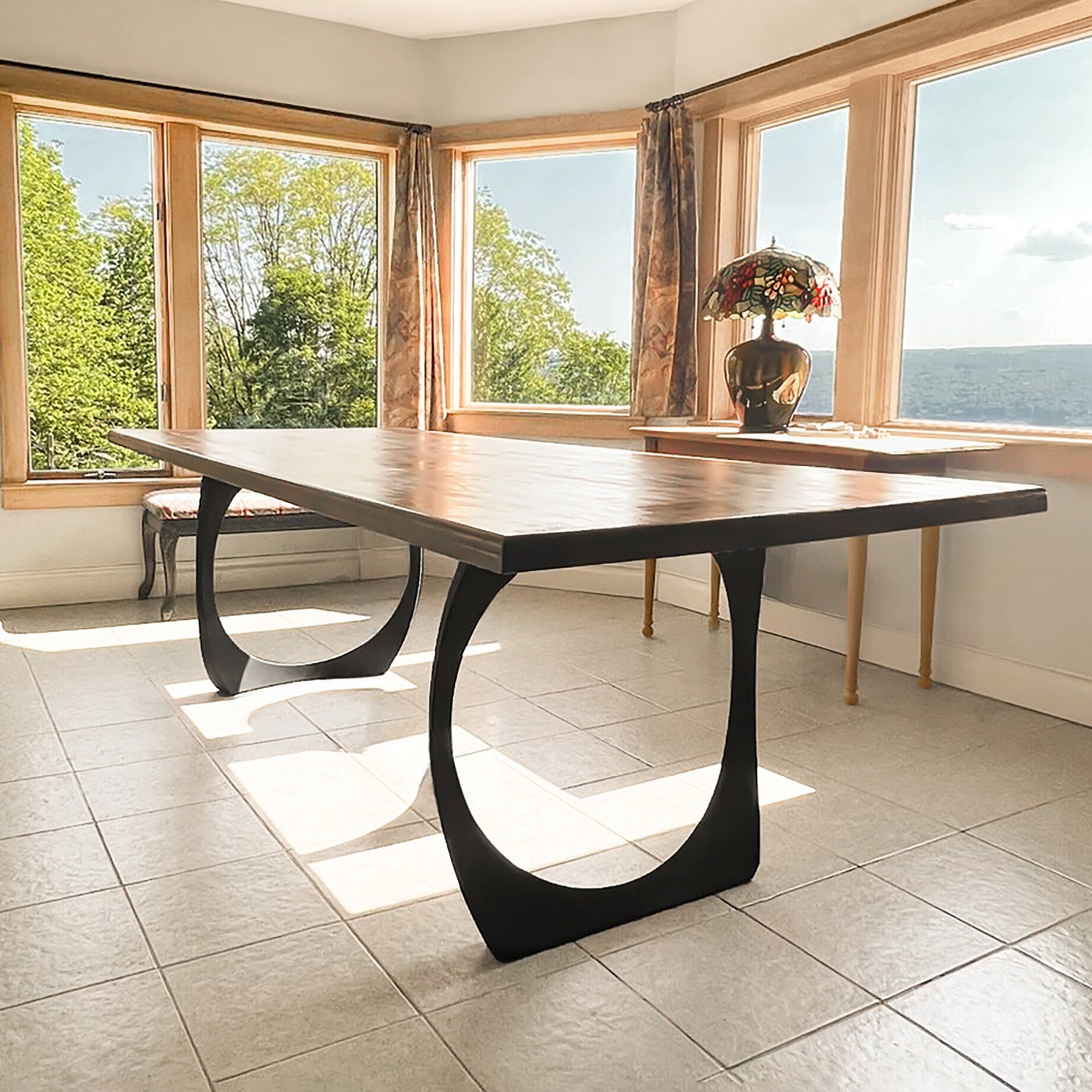The Ultimate Guide to Selecting Sturdy Dining Room Table Legs
The Ultimate Guide to Selecting Sturdy Dining Room Table Legs
Blog Article
An In-depth Take A Look At Eating Table Leg Styles: Discovering the Perfect Match
Choosing the best dining table leg design is important for both aesthetic appeal and practical performance. For those with larger tables, trestle legs make certain strong support, whereas barrette legs present a mid-century modern ambiance with their minimal design. The x-shaped legs mix modern style with improved stability.
Standard Four Legs
Amongst the different types of eating table leg designs, the standard four-leg layout remains an ageless choice for many families. This traditional configuration uses an unified mix of capability and visual appeals, making it a seasonal favorite. Four legs supply well balanced assistance, making sure the table continues to be secure and qualified of bearing considerable weight. This is especially advantageous for households that often organize large celebrations or use their table for numerous objectives, such as work or crafting.
From an aesthetic perspective, the conventional four-leg design can be easily adapted to different interior designs. Whether crafted from wood, metal, or a mix of products, these legs can be intricately carved, sleek and minimalistic, or anything in between. Their versatility allows them to complement both rustic and contemporary setups perfectly.
Moreover, the simple framework of the four-leg layout assists in ease of motion and positioning within a space. Unlike even more complex bases, this design lessens blockages, providing enough legroom for diners. In summary, the conventional four-leg eating table leg style weds withstanding style with functional capability, making it a sharp choice for those seeking both form and feature in their dining furniture.
Stand Base
Frequently commemorated for its sophisticated and space-efficient style, the pedestal base is a distinguished alternative to the standard four-leg configuration in table leg designs. This unique base usually includes a solitary main column supporting the tabletop, which can vary in type, from ornately sculpted timber to streamlined, modern-day metal. Among the key benefits of the stand base is its ability to optimize legroom and seating adaptability. Without corner legs, diners are afforded higher freedom of movement, making it an excellent selection for round and oval tables that advertise more intimate and inclusive events.
The central column itself supplies a canvas for detailed layouts and creative expressions, including an element of visual interest beneath the table. In recap, the stand base incorporates capability with style, making it a refined and useful choice for diverse dining settings.
Trestle Legs
Trestle legs give a robust and timeless foundation for eating tables, characterized by their straight cross-bracing and tough support light beams. Stemming from middle ages times, this style has actually developed yet preserved its important structure, making it a seasonal favorite in both traditional and modern setups. The central trestle beam, commonly supported by 2 or even more vertical messages, supplies extraordinary security, enabling for larger table lengths without the demand for added legs.
A considerable benefit of trestle leg tables is the adequate legroom they provide. Unlike tables with 4 corner legs, the lack of obstructions at the table's edges look these up supplies unobstructed space for chairs and restaurants, enhancing comfort and availability. This makes trestle tables optimal for fitting bigger celebrations, whether in a dining-room or a reception hall.
From rustic farmhouse to sleek modern-day styles, trestle legs can be customized to suit individual preferences. Their enduring appeal and functional advantages make trestle legs an engaging option for those looking for both design and practicality in their eating table.
Hairpin Legs

The allure of hairpin legs exists in Resources their simpleness and versatility - dining room table legs. Available in a range of products, consisting of steel and brass, they can be ended up in numerous shades to match various indoor designs. Whether coupled with a rustic wood tabletop or a modern glass surface, hairpin legs effortlessly mix capability with a touch of classic charm
Toughness is another noteworthy feature of barrette legs. In spite of their fragile appearance, these legs are crafted to birth substantial weight, making sure the table stays secure and secure. Furthermore, they are relatively simple to set up, making them a preferred option for DIY enthusiasts and specialist furnishings makers alike.
X-Shaped Legs

Created from products such as steel, timber, or a combination of both, X-shaped legs can be tailored to match different style preferences. Steel legs typically provide a streamlined and commercial feeling, suitable for loft-style apartments and contemporary dining areas. On the various other hand, wood X-shaped legs supply a warmer, extra rustic allure, suitable for farmhouse or diverse insides. The adaptability in materials enables homeowners to tailor their dining tables to better fit their general style plan.
Moreover, the engineering behind X-shaped legs guarantees even weight circulation, minimizing the risk of tottering and improving longevity. This makes them specifically appropriate for larger dining tables that call for added assistance. Essentially, X-shaped legs mix functional design with contemporary looks, making them a timeless selection for diverse eating atmospheres.
Final Thought
An extensive understanding of table leg designs exposes the distinctive features and benefits of each design. Traditional 4 legs provide security and timeless allure, while pedestal bases provide legroom and a structured appearance. Trestle legs make Clicking Here certain robust support for bigger tables, and hairpin legs present a mid-century contemporary visual. X-shaped legs integrate contemporary design with enhanced security. Selecting the appropriate leg design makes certain both practical and aesthetic complete satisfaction in any type of dining space.
Report this page